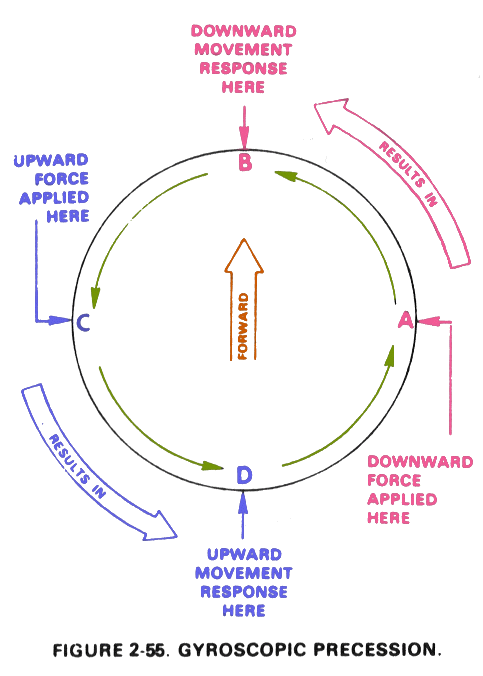

A downward force applied to the disk at point A results in a downward change in disk attitude at point B. And upward force applied at Point C results in an upward change in disk attitude at point D.
Forces applied to a spinning rotor disk by control input or by wind gusts will react as follows:
"table at bottom of page 2-44"
This behavior explains some of the fundamental effects occurring during various helicopter maneuvers. For example, the helicopter behaves differently when rolling into a right turn than when rolling into a left turn. During roll into a left turn, the pilot will have to correct for a nose down tendency in order to maintain altitude. This correction is required because precession causes a nose down tendency and because the tilted disk produces less vertical lift to counteract gravity. Conversely, during a roll into a right turn, precession will cause a nose up tendency while the tilted disk will produce less vertical lift. Pilot input required to maintain altitude is significantly different during a right turn than during a left turn, because gyroscopic precession acts in opposite directions for each.